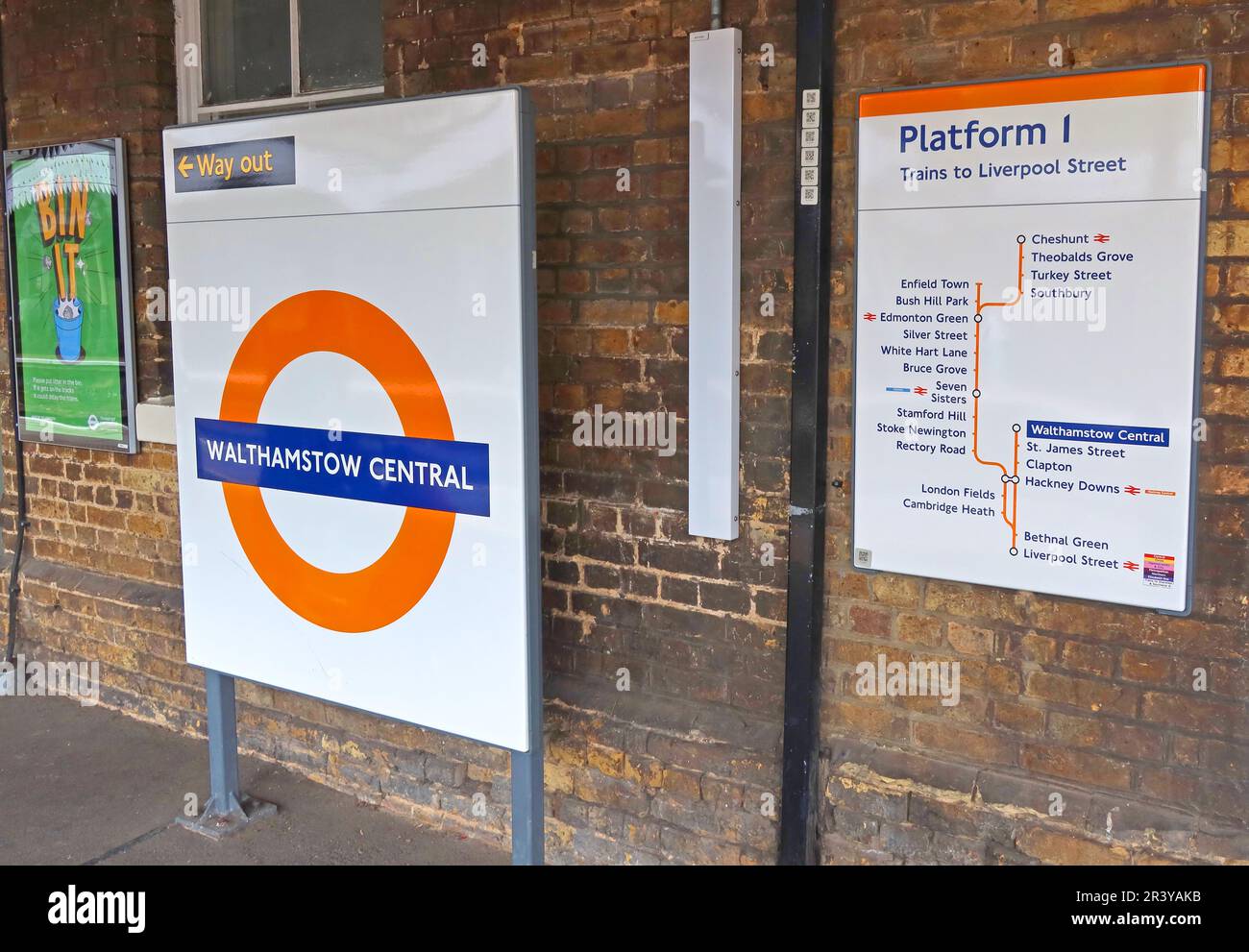Walthamstow Central Overground station, platform One, BR, Hoe St, Walthamstow, London, England, UK, E17 7LP

Image details
Contributor:
Tony Smith / Alamy Stock PhotoImage ID:
2R3YAKBFile size:
45.9 MB (1.5 MB Compressed download)Releases:
Model - no | Property - noDo I need a release?Dimensions:
4812 x 3336 px | 40.7 x 28.2 cm | 16 x 11.1 inches | 300dpiDate taken:
21 May 2023Location:
Hoe St, Walthamstow, London, E17 7LPMore information:
Walthamstow Central is a London Underground and London Overground interchange station in the town of Walthamstow in the London Borough of Waltham Forest, north-east London. It is the northern terminus of the Victoria line following Blackhorse Road and is the second of five stations on the Chingford branch of the Lea Valley lines operated by London Overground since 2015, 6 miles 16 chains (10.0 km) from London Liverpool Street between St. James Street and Wood Street. The two lines have separate platforms at different levels. The station is in Travelcard Zone 3. It linked to Walthamstow Queen's Road station on the Gospel Oak to Barking line by a broad footpath, Ray Dudley Way. Walthamstow Central is the closest tube station to Walthamstow Market, the longest outdoor market in Europe. London Overground - The station was opened by the Great Eastern Railway (GER) as Hoe Street in 1870 when a line was opened from Lea Bridge to a temporary station called Shern Hall Street which was east of the Hoe Street station. The line to London, that the Chingford branch uses today was opened two years later in 1872 from Hall Farm Junction to Bethnal Green, with the branch also being extended north to Chingford in 1873. The GER amalgamated with several other railways to create the London and North Eastern Railway at the beginning of 1923. In 1948 the railways were nationalised and responsibility for operating the station fell to British Railways (Eastern Region). The line was electrified in the late 1950s The underground station, like many stations on the Victoria line, was built to a low budget. White ceiling panels were never fixed to the ceilings above the platforms; instead the steel tunnel segments were painted black and used to support the fixtures and fittings, cutting lighting levels. A concrete stairway sits between two escalators instead of a third; this economy caused a disruptive station closure for several weeks in 2004 when both escalators went out of service.